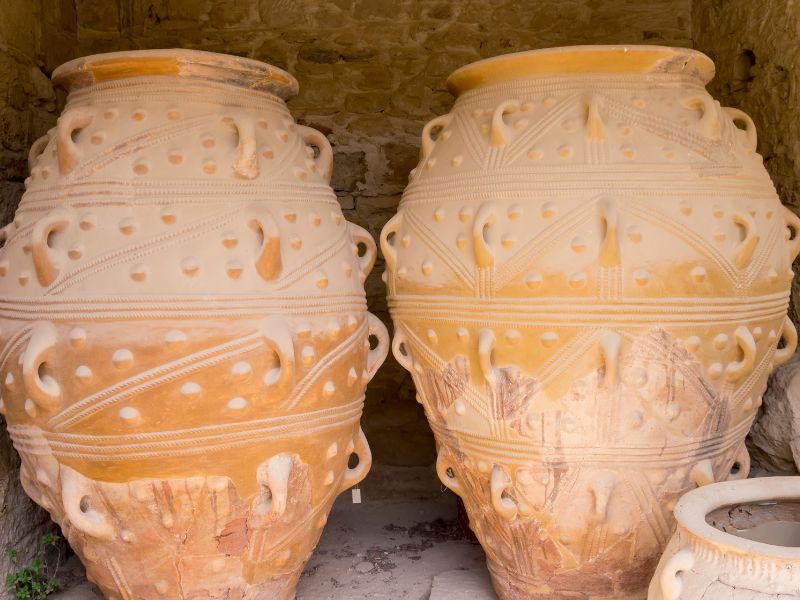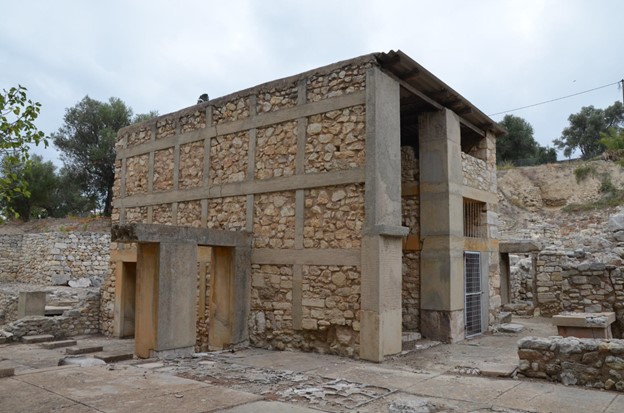
Knossos: Olives and grape leaves in a well of the 3rd millennium BC
Two olive piths and the imprint of a vine leaf on a raw plinth, humble findings but of great importance since they were found in a well of the 3rd millennium BC in Knossos, speak in their own way about the settlement of that era and about two of its most important products, the olive and the vine. The findings of this so-called “palatial well”, 17.2 metres deep and from excavations of part of the settlement of Knossos, were reported by Professor Gerald Cadogan on “Early Minoan Knossos: some new thoughts” at the seminar on Minoan Archaeology at the Archaeological Society.
The first Bronze Age well found in Knossos is the one in which there are three distinct, temporally distinct, phases of deposition. From the oldest one come large proxies (vases) with comb-like decoration. Then, however, the main deposit at a depth of 10-11 metres was extremely rich: obsidian, high-quality ink-stamped bowls and fruit bowls with glazed decoration, painted prochoes, pithoi, buckets of unfired clay and a unique compass shell (box) with suspension holes made of fine grey pottery, which was probably imported from Mesara. Also the pips, the vine leaf and many animal bones.
Another interesting element is the construction of the well, since, as Mr Cadogan says ” This well offers important information about the Early Minoan community of Knossos as it is a unique construction, related to the activity of a dowser or a skilled craftsman in the drilling of wells, and it gives evidence of the strict observance of hygiene rules after its construction. There is also much evidence of a fire which destroyed part or all of the settlement of Knossos during this period.
Finally, the excavations in the northern part of the ‘Royal Road’ and the ‘Early Houses’ help to complete the picture of the development of Knossos in the 3rd millennium BC. In particular, the settlement of this period had a remarkable social organisation, it had expanded northwards and southwards, important buildings were constructed under the Western Court, the north-western dome, perhaps part of the first truly monumental building (which may have been the palace) in Knossos, probably the Underground and the Crypt, while the construction of the first roads began. But the great unknown remains the cemeteries of Early Minoan Knossos,” Cadogan concludes.




